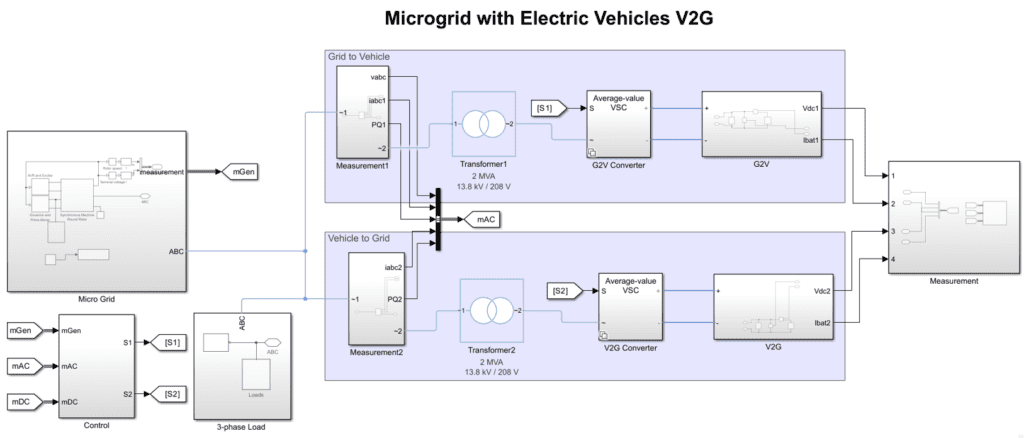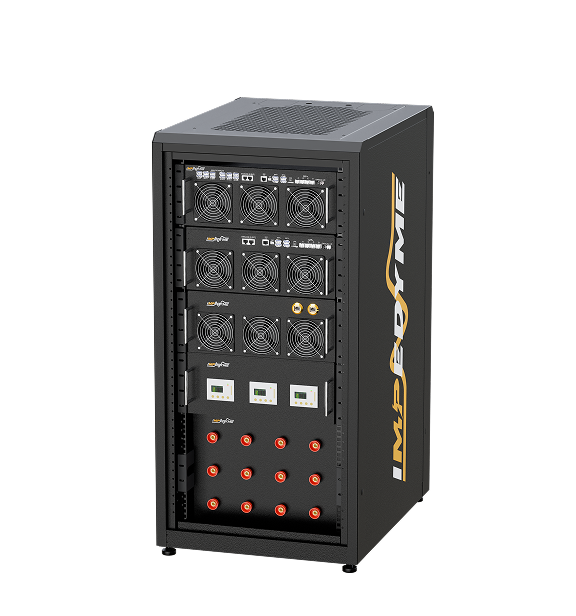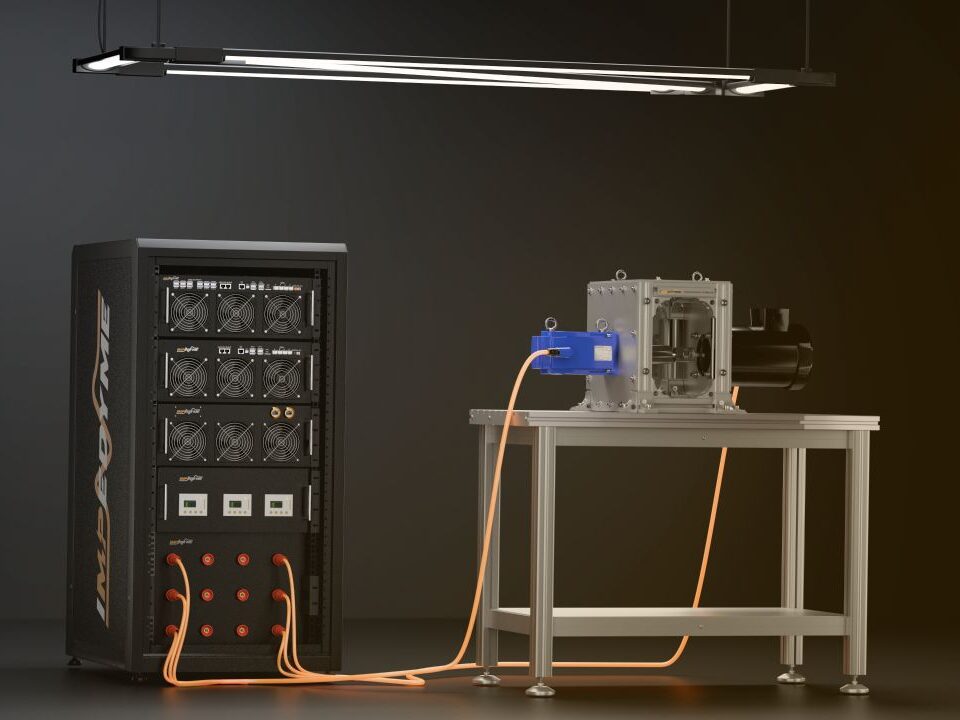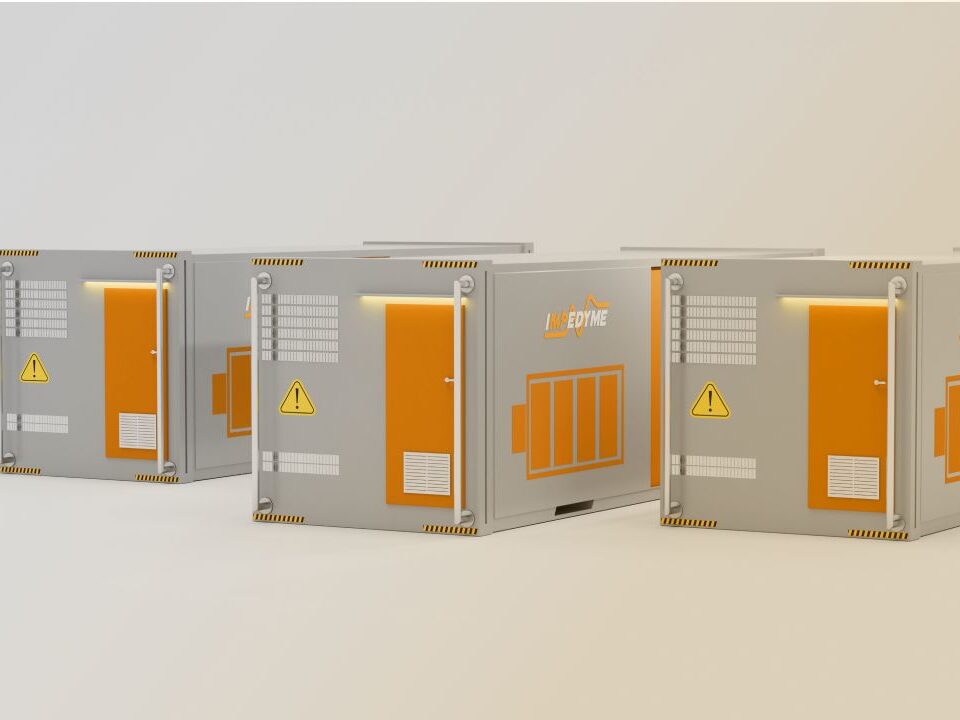
-
 Induction Motor
Induction Motor
-
 Automotive Electrical System Simulation
Automotive Electrical System Simulation
-
 DC/DC Bidirectional Converter
DC/DC Bidirectional Converter
-
 PWM Control for Brushless DC
PWM Control for Brushless DC
-
 BLDC Motor Control and Drive Simulation
BLDC Motor Control and Drive Simulation
-
 Electric Vehicle Fast Charger Simulation
Electric Vehicle Fast Charger Simulation
-
 DFIG Wind Turbine Simulation
DFIG Wind Turbine Simulation
-
 Dual Active Bridge
Dual Active Bridge
-
 EV Dynamometer Test Environment Simulation
EV Dynamometer Test Environment Simulation
-
 Electric Vehicle Simulation
Electric Vehicle Simulation
-
 Three-Phase Grid-Connected Inverter Using Direct-Q…
Three-Phase Grid-Connected Inverter Using Direct-Q…
-
 Three-Phase Grid-Connected Solar Photovoltaic
Three-Phase Grid-Connected Solar Photovoltaic
-
 Grid-Connected Rectifier
Grid-Connected Rectifier
-
 Grid-Tied Inverter System
Grid-Tied Inverter System
-
 Torque Control in a Hybrid Excitation Synchronous …
Torque Control in a Hybrid Excitation Synchronous …
-
 Wye-Delta Starting Circuit
Wye-Delta Starting Circuit
-
 IPMSM-Based Axle-Drive
IPMSM-Based Axle-Drive
-
 Simplified Parallel Hybrid Electric Vehicle
Simplified Parallel Hybrid Electric Vehicle
-
 Simplified Series Hybrid Electric Vehicle
Simplified Series Hybrid Electric Vehicle
-
 Series-Parallel Hybrid Electric Vehicle
Series-Parallel Hybrid Electric Vehicle
-
 Three-Phase Matrix Converter Simulation
Three-Phase Matrix Converter Simulation
-
 Venturini Modulation for Three-Phase Matrix Conver…
Venturini Modulation for Three-Phase Matrix Conver…
-
 Microgrid Frequency Regulation Using Vehicle-to-Gr…
Microgrid Frequency Regulation Using Vehicle-to-Gr…
-
 Three-Phase Modular Multilevel Converter
Three-Phase Modular Multilevel Converter
-
 Field-Oriented Control
Field-Oriented Control
-
 Interior Permanent Magnet Synchronous Generator
Interior Permanent Magnet Synchronous Generator
-
 Permanent Magnet Synchronous Machine
Permanent Magnet Synchronous Machine
-
 PMSM Rotor Angular Velocity
PMSM Rotor Angular Velocity
-
 PMSM-Based Electrical Traction Drive
PMSM-Based Electrical Traction Drive
-
 Maximum Power Point Tracking
Maximum Power Point Tracking
-
 Six-Phase Permanent Magnet Synchronous Machine
Six-Phase Permanent Magnet Synchronous Machine
-
 Synchronous Machine-Based Electrical Drive Simulat…
Synchronous Machine-Based Electrical Drive Simulat…
-
 Single-Stage Solar Inverter
Single-Stage Solar Inverter
-
 Three-Phase Cycloconverter Simulation
Three-Phase Cycloconverter Simulation
-
 Totem-Pole PFC Simulation
Totem-Pole PFC Simulation
-
 Twelve-Pulse Thyristor Rectifier
Twelve-Pulse Thyristor Rectifier
-
 Two-Wheeler On-Board Charger
Two-Wheeler On-Board Charger
-
 Vienna Rectifier Simulation
Vienna Rectifier Simulation
-
 High-Voltage Direct Current
High-Voltage Direct Current
-
 Wireless Power Transfer
Wireless Power Transfer

Comprehensive Documentation for Microgrid Frequency Regulation Using Vehicle-to-Grid (V2G) Simulation
Table of Contents
- 1 Comprehensive Documentation for Microgrid Frequency Regulation Using Vehicle-to-Grid (V2G) Simulation
- 1.1 Introduction
- 1.2 System Overview
- 1.2.1 What is Vehicle-to-Grid (V2G)?
- 1.2.2 Purpose of the Simulation
- 1.3 Key Features
- 1.3.1 Frequency Regulation Support
- 1.3.2 Smart Charging and Discharging Strategies
- 1.3.3 Bidirectional Power Flow Control
- 1.4 Simulation Objectives
- 1.5 Technical Description
- 1.5.1 System Configuration
- 1.5.2 Control Methodology
- 1.6 Advantages of V2G for Microgrid Regulation
- 1.7 Applications
- 1.8 Simulation Benefits
- 1.9 Summary
- 1.10 Future Enhancements
- 1.10.1 Induction Motor
- 1.10.2 Automotive Electrical System Simulation
- 1.10.3 DC/DC Bidirectional Converter
- 1.10.4 PWM Control for Brushless DC
Introduction
The Microgrid Frequency Regulation Using Vehicle-to-Grid (V2G) Simulation explores the integration of electric vehicles (EVs) into microgrid operations to enhance frequency stability and grid resilience. The V2G technology enables bidirectional energy flow between EVs and the grid, allowing stored energy in EV batteries to be discharged during high demand periods and recharged during low demand periods. This simulation evaluates the impact of V2G on microgrid frequency regulation and power quality improvement.

System Overview
What is Vehicle-to-Grid (V2G)?
Vehicle-to-Grid (V2G) is a smart grid technology that allows EVs to function as distributed energy resources (DERs) by providing grid services such as frequency regulation, demand response, and peak shaving. This is achieved through bidirectional chargers that manage the charging and discharging cycles based on real-time grid conditions.
Purpose of the Simulation
The simulation aims to:
- Analyze microgrid frequency response with active EV participation.
- Validate V2G-based frequency control strategies.
- Optimize charging/discharging schedules for grid stability.
Key Features
Frequency Regulation Support
V2G technology allows EVs to inject or absorb power to stabilize grid frequency fluctuations. ➡️ HIL/PHIL Benefit: Real-time grid emulation using Impedyme’s PHIL allows testing how V2G-enabled EVs contribute to frequency regulation under dynamic conditions.
Smart Charging and Discharging Strategies
Optimized scheduling ensures EV batteries are charged when grid demand is low and discharged when demand is high. ➡️ HIL/PHIL Benefit: Enables verification of smart charging algorithms and grid-friendly discharging cycles.
Bidirectional Power Flow Control
The V2G system supports energy flow in both directions, allowing EVs to act as grid stabilizers. ➡️ HIL/PHIL Benefit: Simulation validates bidirectional energy exchange under different grid scenarios.
Cost Savings: V2G technology reduces the need for expensive grid infrastructure and peaking power plants, lowering energy costs.
Environmental Benefits: Integrating EVs with renewable energy sources reduces greenhouse gas emissions and supports the transition to clean energy.
Energy Resilience: V2G enhances the resilience of microgrids by providing backup power and frequency regulation during grid disturbances.
Simulation Objectives
This simulation helps evaluate:
- Microgrid frequency stability with V2G integration.
- Optimal control strategies for V2G-enabled EV fleets.
- Impact of high EV penetration on power quality and grid resilience. ➡️ HIL/PHIL Benefit: Real-time testing ensures that theoretical models align with actual grid behavior.
Technical Description
System Configuration
- Input: Microgrid with renewable energy sources (solar, wind) and EV charging stations.
- Control System: Dynamic frequency controllers managing EV charging and discharging.
- Power Flow: EVs supply power during peak demand and charge during off-peak hours.
Control Methodology
- Droop Control for Frequency Regulation: Adjusts EV power output based on grid frequency deviations.
- State-of-Charge (SOC)-Aware Charging: Ensures EV batteries are optimally charged while maintaining grid stability.
- Real-Time Demand Response: Adjusts V2G participation based on grid needs. ➡️ HIL/PHIL Benefit: Control strategies can be refined in real-time simulation environments before deployment.
Advantages of V2G for Microgrid Regulation
- Enhanced Grid Stability: EVs provide fast response to frequency deviations.
- Efficient Renewable Energy Utilization: V2G smooths out variability in solar and wind power generation.
- Reduced Need for Costly Grid Infrastructure Upgrades: V2G enables decentralized energy management. ➡️ HIL/PHIL Benefit: Testing these advantages in a simulated environment ensures reliable real-world implementation.
Applications
- Renewable Energy Integration
Balancing Intermittent Generation: V2G simulations help optimize the use of EVs to balance the variability of renewable energy sources (e.g., solar and wind) in microgrids, ensuring stable frequency and reliable power supply.
Energy Storage on Wheels: EVs act as mobile energy storage systems, storing excess renewable energy and releasing it when needed to maintain grid stability.
➡️ HIL/PHIL Benefit: Simulations help develop customized V2G strategies for various grid applications
- Industrial Microgrids
Manufacturing Facilities: Industrial plants with microgrids use V2G simulations to integrate EVs into their energy management systems, reducing peak demand charges and improving energy efficiency.
Data Centers: Data centers with microgrids leverage V2G technology to ensure uninterrupted power supply and frequency stability, enhancing operational reliability.
- Commercial and Residential Microgrids
Office Complexes: Commercial buildings with microgrids use V2G simulations to optimize the use of EVs for frequency regulation, reducing energy costs and improving grid stability.
Residential Communities: Residential microgrids integrate EVs to provide frequency regulation and backup power during outages, enhancing energy resilience for homeowners.
- Island and Remote Microgrids
Island Grids: V2G simulations help island microgrids stabilize frequency by using EVs to balance supply and demand, reducing reliance on diesel generators.
Remote Mining Operations: Mining sites with microgrids use V2G technology to improve frequency stability and reduce energy costs, ensuring reliable power for critical operations.
- Transportation Hubs
Electric Bus Depots: Bus depots with microgrids use V2G simulations to optimize the use of electric buses for frequency regulation, reducing energy costs and improving grid stability.
Airports and Seaports: Transportation hubs with microgrids integrate EVs to provide frequency regulation and backup power, ensuring reliable operations during grid disturbances.
- Emergency and Disaster Response
Emergency Shelters: Microgrids in emergency shelters use V2G simulations to integrate EVs for frequency regulation and backup power, ensuring reliable energy supply during disasters.
Disaster Recovery: V2G technology helps stabilize microgrids in disaster-affected areas, providing critical power for recovery efforts.
- Urban Smart Grids: Integrates EVs as flexible energy storage resources.
Simulation Benefits
With this simulation, users can:
- Test real-time V2G frequency support mechanisms.
- Evaluate microgrid reliability improvements with V2G.
- Optimize EV charging/discharging coordination for grid support. ➡️ HIL/PHIL Benefit: Insights from the simulation can be directly applied to hardware validation and grid deployment.
Summary
The Microgrid Frequency Regulation Using V2G Simulation demonstrates how electric vehicles can actively participate in grid frequency control, enhancing grid stability and efficiency. By leveraging Impedyme’s HIL and PHIL solutions, the development process is optimized:
| Development Stage | Impedyme’s Contribution |
|---|---|
| Control Design | RCP using HIL for rapid algorithm validation |
| Control Hardware Testing | CIL with real-time V2G microgrid models |
| Power Stage Verification | PHIL with real voltage and power interaction |
| Final Validation | Full-system PHIL under realistic microgrid conditions |
Future Enhancements
- AI-Based Predictive Control for V2G Scheduling.
- Blockchain-Enabled Peer-to-Peer Energy Trading Between EVs.
- Integration of Multi-Terminal V2G Networks for Large-Scale Microgrid Management.
The Microgrid Frequency Regulation Using V2G introduces a novel approach to frequency stabilization by integrating EVs as active grid participants. With Impedyme’s HIL/PHIL platforms, the transition from simulation to real-world implementation is seamless, ensuring robust system performance, enhanced grid resilience, and optimized EV energy management.






